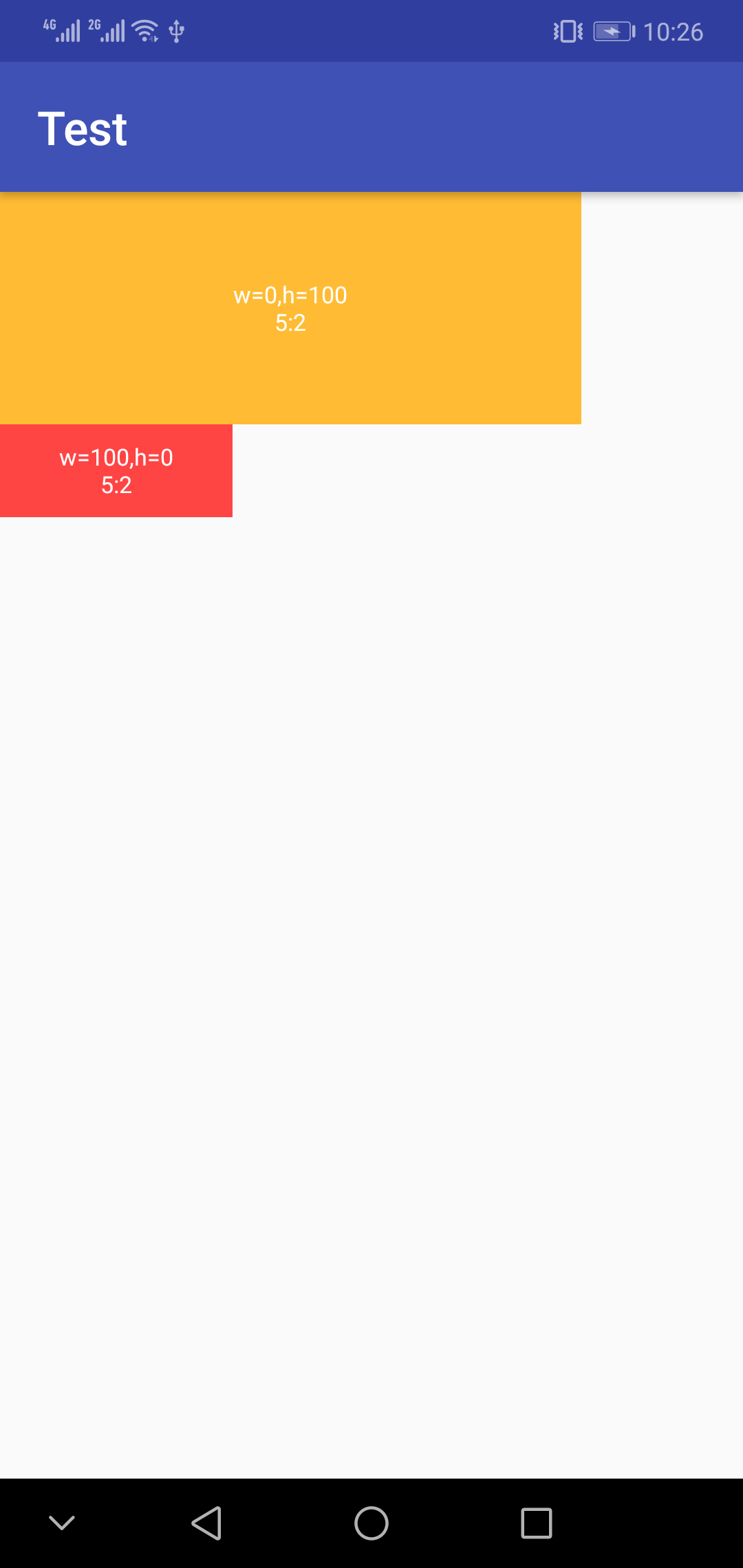12.源码阅读(app启动流程-android api 26)
activity的启动流程之前已经通过源码了解了,那么app的启动流程是怎样的,从我们按下app的图标,到应用启动起来显示出画面,中间都经历了什么?
安卓是基于java的,所以和java有一定的相似性,一个java程序的起点是main,那么android是不是也是如此?事实上,正如猜想我们找到ActivityTread这个类中的main方法,这里就是app启动的源头
public static void main(String[] args) {
Trace.traceBegin(Trace.TRACE_TAG_ACTIVITY_MANAGER, "ActivityThreadMain");
SamplingProfilerIntegration.start();
CloseGuard.setEnabled(false);
//初始化内存卡环境
Environment.initForCurrentUser();
// Set the reporter for event logging in libcore
EventLogger.setReporter(new EventLoggingReporter());
//处理签名相关的东西,验证之类的饿
AndroidKeyStoreProvider.install();
// Make sure TrustedCertificateStore looks in the right place for CA certificates
//用户目录相关的东西
final File configDir = Environment.getUserConfigDirectory(UserHandle.myUserId());
TrustedCertificateStore.setDefaultUserDirectory(configDir);
Process.setArgV0("<pre-initialized>");
//应用程序一启动就初始化全局的looper
Looper.prepareMainLooper();
ActivityThread thread = new ActivityThread();
//这个是主要的方法,false表示不是系统应用,第三方app默认都是false
thread.attach(false);
//初始化主线程handler,在ActivityTread加载的时候就已经生成了
if (sMainThreadHandler == null) {
sMainThreadHandler = thread.getHandler();
}
if (false) {
Looper.myLooper().setMessageLogging(new
LogPrinter(Log.DEBUG, "ActivityThread"));
}
// End of event ActivityThreadMain.
Trace.traceEnd(Trace.TRACE_TAG_ACTIVITY_MANAGER);
Looper.loop();
throw new RuntimeException("Main thread loop unexpectedly exited");
}
正式开始加载app
private void attach(boolean system) {
sCurrentActivityThread = this;
mSystemThread = system;
if (!system) {
//第三方应用
//ViewRootImpl相关
......
//这个已经很熟悉了,我们要去找IActivityManager的实现类ActivityManagerService
final IActivityManager mgr = ActivityManagerNative.getDefault();
try {
//进入ActivityManagerService
mgr.attachApplication(mAppThread);
} catch (RemoteException ex) {
// Ignore
}
//可以看到这里是内存使用量的一个监听,当app已经占用的空间大于系统分配给
//这个app最大空间的四分之三的时候,java虚拟机会触发gc清理空间
BinderInternal.addGcWatcher(new Runnable() {
@Override public void run() {
if (!mSomeActivitiesChanged) {
return;
}
Runtime runtime = Runtime.getRuntime();
long dalvikMax = runtime.maxMemory();
long dalvikUsed = runtime.totalMemory() - runtime.freeMemory();
if (dalvikUsed > ((3*dalvikMax)/4)) {
if (DEBUG_MEMORY_TRIM) Slog.d(TAG, "Dalvik max=" + (dalvikMax/1024)
+ " total=" + (runtime.totalMemory()/1024)
+ " used=" + (dalvikUsed/1024));
mSomeActivitiesChanged = false;
try {
mgr.releaseSomeActivities(mAppThread);
} catch (RemoteException e) {
}
}
}
});
} else {
//系统应用
// Don't set application object here -- if the system crashes,
// we can't display an alert, we just want to die die die.
android.ddm.DdmHandleAppName.setAppName("system_process",
UserHandle.myUserId());
try {
mInstrumentation = new Instrumentation();
ContextImpl context = ContextImpl.createAppContext(
this, getSystemContext().mPackageInfo);
mInitialApplication = context.mPackageInfo.makeApplication(true, null);
mInitialApplication.onCreate();
} catch (Exception e) {
throw new RuntimeException(
"Unable to instantiate Application():" + e.toString(), e);
}
}
// add dropbox logging to libcore
DropBox.setReporter(new DropBoxReporter());
//设置Configuration改变的监听
ViewRootImpl.addConfigCallback(new ComponentCallbacks2() {
@Override
public void onConfigurationChanged(Configuration newConfig) {
synchronized (mResourcesManager) {
// We need to apply this change to the resources
// immediately, because upon returning the view
// hierarchy will be informed about it.
if (mResourcesManager.applyConfigurationToResourcesLocked(newConfig, null)) {
// This actually changed the resources! Tell
// everyone about it.
if (mPendingConfiguration == null ||
mPendingConfiguration.isOtherSeqNewer(newConfig)) {
mPendingConfiguration = newConfig;
sendMessage(H.CONFIGURATION_CHANGED, newConfig);
}
}
}
}
@Override
public void onLowMemory() {
}
@Override
public void onTrimMemory(int level) {
}
});
}
进入ActivityManagerService
@Override
public final void attachApplication(IApplicationThread thread) {
synchronized (this) {
int callingPid = Binder.getCallingPid();
final long origId = Binder.clearCallingIdentity();
attachApplicationLocked(thread, callingPid);
Binder.restoreCallingIdentity(origId);
}
}
private final boolean attachApplicationLocked(IApplicationThread thread,
int pid) {
......
//thread就是传过来的final ApplicationThread mAppThread = new ApplicationThread();它在ActivityThread加载的时候就已经创建
thread.bindApplication(processName, appInfo, providers, app.instrumentationClass,
profilerInfo, app.instrumentationArguments, app.instrumentationWatcher,
app.instrumentationUiAutomationConnection, testMode, enableOpenGlTrace,
isRestrictedBackupMode || !normalMode, app.persistent,
new Configuration(mConfiguration), app.compat,
getCommonServicesLocked(app.isolated),
mCoreSettingsObserver.getCoreSettingsLocked());
......
// See if the top visible activity is waiting to run in this process...
if (normalMode) {
try {
if (mStackSupervisor.attachApplicationLocked(app)) {
didSomething = true;
}
} catch (Exception e) {
Slog.wtf(TAG, "Exception thrown launching activities in " + app, e);
badApp = true;
}
}
// Find any services that should be running in this process...
if (!badApp) {
try {
didSomething |= mServices.attachApplicationLocked(app, processName);
} catch (Exception e) {
Slog.wtf(TAG, "Exception thrown starting services in " + app, e);
badApp = true;
}
}
......
回到ActivityThread中
public final void bindApplication(String processName, ApplicationInfo appInfo,
List<ProviderInfo> providers, ComponentName instrumentationName,
ProfilerInfo profilerInfo, Bundle instrumentationArgs,
IInstrumentationWatcher instrumentationWatcher,
IUiAutomationConnection instrumentationUiConnection, int debugMode,
boolean enableOpenGlTrace, boolean isRestrictedBackupMode, boolean persistent,
Configuration config, CompatibilityInfo compatInfo, Map<String, IBinder> services,
Bundle coreSettings) {
if (services != null) {
// Setup the service cache in the ServiceManager
ServiceManager.initServiceCache(services);
}
setCoreSettings(coreSettings);
/*
* Two possible indications that this package could be
* sharing its runtime with other packages:
*
* 1.) the sharedUserId attribute is set in the manifest,
* indicating a request to share a VM with other
* packages with the same sharedUserId.
*
* 2.) the application element of the manifest has an
* attribute specifying a non-default process name,
* indicating the desire to run in another packages VM.
*
* If sharing is enabled we do not have a unique application
* in a process and therefore cannot rely on the package
* name inside the runtime.
*/
IPackageManager pm = getPackageManager();
android.content.pm.PackageInfo pi = null;
try {
pi = pm.getPackageInfo(appInfo.packageName, 0, UserHandle.myUserId());
} catch (RemoteException e) {
}
if (pi != null) {
boolean sharedUserIdSet = (pi.sharedUserId != null);
boolean processNameNotDefault =
(pi.applicationInfo != null &&
!appInfo.packageName.equals(pi.applicationInfo.processName));
boolean sharable = (sharedUserIdSet || processNameNotDefault);
// Tell the VMRuntime about the application, unless it is shared
// inside a process.
if (!sharable) {
VMRuntime.registerAppInfo(appInfo.packageName, appInfo.dataDir,
appInfo.processName);
}
}
AppBindData data = new AppBindData();
data.processName = processName;
data.appInfo = appInfo;
data.providers = providers;
data.instrumentationName = instrumentationName;
data.instrumentationArgs = instrumentationArgs;
data.instrumentationWatcher = instrumentationWatcher;
data.instrumentationUiAutomationConnection = instrumentationUiConnection;
data.debugMode = debugMode;
data.enableOpenGlTrace = enableOpenGlTrace;
data.restrictedBackupMode = isRestrictedBackupMode;
data.persistent = persistent;
data.config = config;
data.compatInfo = compatInfo;
data.initProfilerInfo = profilerInfo;
sendMessage(H.BIND_APPLICATION, data);
}
handler接收消息进行处理
case BIND_APPLICATION:
Trace.traceBegin(Trace.TRACE_TAG_ACTIVITY_MANAGER, "bindApplication");
AppBindData data = (AppBindData)msg.obj;
handleBindApplication(data);
Trace.traceEnd(Trace.TRACE_TAG_ACTIVITY_MANAGER);
break;
private void handleBindApplication(AppBindData data) {
......
//反射加载到Instrumentation对象或者当条件不满足时,直接new出来
try {
java.lang.ClassLoader cl = instrContext.getClassLoader();
mInstrumentation = (Instrumentation)
cl.loadClass(data.instrumentationName.getClassName()).newInstance();
} catch (Exception e) {
throw new RuntimeException(
"Unable to instantiate instrumentation "
+ data.instrumentationName + ": " + e.toString(), e);
}
....
else {
mInstrumentation = new Instrumentation();
}
......
try {
//调用Application的onCreate 方法
mInstrumentation.callApplicationOnCreate(app);
} catch (Exception e) {
if (!mInstrumentation.onException(app, e)) {
throw new RuntimeException(
"Unable to create application " + app.getClass().getName()
+ ": " + e.toString(), e);
}
}
}
Application是启动了,那么到了这里似乎已经无法继续往下走了,activity是如何启动的,我们回到ActivityManagerService中,在上边的那代码下如下,现在已经知道了bindApplication最终执行到了Application的onCreate,那么下边的方法attachApplicationLocked将会是寻找Activity启动的线索
private final boolean attachApplicationLocked(IApplicationThread thread,
int pid) {
......
//thread就是传过来的final ApplicationThread mAppThread = new ApplicationThread();它在ActivityThread加载的时候就已经创建
thread.bindApplication(processName, appInfo, providers, app.instrumentationClass,
profilerInfo, app.instrumentationArguments, app.instrumentationWatcher,
app.instrumentationUiAutomationConnection, testMode, enableOpenGlTrace,
isRestrictedBackupMode || !normalMode, app.persistent,
new Configuration(mConfiguration), app.compat,
getCommonServicesLocked(app.isolated),
mCoreSettingsObserver.getCoreSettingsLocked());
......
// See if the top visible activity is waiting to run in this process...
if (normalMode) {
try {
if (mStackSupervisor.attachApplicationLocked(app)) {
didSomething = true;
}
} catch (Exception e) {
Slog.wtf(TAG, "Exception thrown launching activities in " + app, e);
badApp = true;
}
}
// Find any services that should be running in this process...
if (!badApp) {
try {
didSomething |= mServices.attachApplicationLocked(app, processName);
} catch (Exception e) {
Slog.wtf(TAG, "Exception thrown starting services in " + app, e);
badApp = true;
}
}
......
attachApplicationLocked
boolean attachApplicationLocked(ProcessRecord app) throws RemoteException {
final String processName = app.processName;
boolean didSomething = false;
for (int displayNdx = mActivityDisplays.size() - 1; displayNdx >= 0; --displayNdx) {
ArrayList<ActivityStack> stacks = mActivityDisplays.valueAt(displayNdx).mStacks;
for (int stackNdx = stacks.size() - 1; stackNdx >= 0; --stackNdx) {
final ActivityStack stack = stacks.get(stackNdx);
if (!isFrontStack(stack)) {
continue;
}
ActivityRecord hr = stack.topRunningActivityLocked(null);
if (hr != null) {
if (hr.app == null && app.uid == hr.info.applicationInfo.uid
&& processName.equals(hr.processName)) {
try {
//真的开始启动activity了
if (realStartActivityLocked(hr, app, true, true)) {
didSomething = true;
}
} catch (RemoteException e) {
Slog.w(TAG, "Exception in new application when starting activity "
+ hr.intent.getComponent().flattenToShortString(), e);
throw e;
}
}
}
}
}
if (!didSomething) {
ensureActivitiesVisibleLocked(null, 0);
}
return didSomething;
}
到了realStartActivityLocked这个方法这里,后边的东西就和之前看过的activity的启动流程相同了,所以就不再往下看了,感兴趣可以看看我的另一篇03.源码阅读(Activity启动流程--android api 23)






